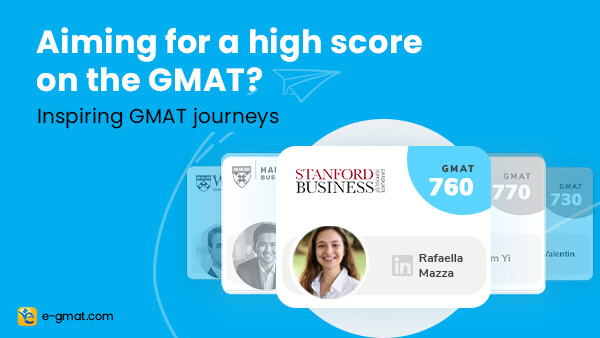A compelling optical illusion called the illusion of velocity and size makes objects appear to be moving more slowly the larger the objects are. Therefore, a motorist’s estimate of the time available for crossing a highway with a small car approaching is bound to be lower than it would be with a large truck approaching.
The conclusion above would be more properly drawn if it were made clear that the
(A) truck’s speed is assumed to be lower than the car’s
(B) truck’s speed is assumed to be the same as the car’s
(C) truck’s speed is assumed to be higher than the car’s
(D) motorist’s estimate of time available is assumed to be more accurate with cars approaching than with trucks approaching
(E) motorist’s estimate of time available is assumed to be more accurate with trucks approaching than with cars approaching
Solution
Passage Analysis
| A compelling optical illusion called the illusion of velocity and size makes objects appear to be moving more slowly the larger the objects are. | Key-points from this statement:
Please bear in mind the implication of the word illusion. In an illusion things seem different from what they actually are. Since here the larger objects seem/appear to be moving slower, the understanding would be that they actually are NOT moving that slowly. |
| Therefore, a motorist’s estimate of the time available for crossing a highway with a small car approaching is bound to be lower than it would be with a large truck approaching. | Key-points from this statement:
|
Loved the solution? Take a free trial to get unlimited access to concept files, live sessions, and practice questions. For any strategic advice for GMAT or MBA Admissions, write to us at acethegmat@e-gmat.com. We are the most reviewed GMAT prep company on GMATClub with more than 2400+ reviews
Pre-thinking
The question stem asks us to find a statement that will help establish the conclusion more appropriately. Essentially this means that we are to find a statement that the author has not stated but assumed while making the conclusion. So to find the correct assumption, let’s look at the argument once again keeping the passage-analysis in mind:
1) A kind of optical illusion exists where the larger the object the more the effect of the illusion
2) Effect of illusion: makes moving objects seem to moving at a lower speed than they actually are
3) Author’s application of the illusion: a motorist will budget less time for a small car approaching him/her path than for a large truck doing so.
Now the quintessential question is why does the motorist budget less time for a small car and more time for the large truck. The answer is that the motorist is under the illusion. The illusion makes him/her think that the small car is moving faster than the large truck and, hence, he is budgeting the time accordingly. So what is the reality in this case? How can the author justify giving this example for the optical illusion being discussed? The only way the author is justified in applying the working of the illusion in this case if he/she assumes that there is no difference between the speed of the small car and the large truck but still since the truck is the bigger object between the two, it appears to be moving more slowly to the motorist.
With this pre-thinking in mind, let’s approach the following answer choices:
Analysis of Option Statements
| (A) truck’s speed is assumed to be lower than the car’s | This option is incorrect. If the truck’s speed is actually lower than that of the car, then there is no illusion. This means that the motorist is probably making a fair estimate of the speeds of the objects and hence, the author’s judgment is probably not valid in applying the effect of the illusion in this case. However, our job is to make the author’s conclusion more valid. Therefore, this is not the correct answer choice. |
| (B) truck’s speed is assumed to be the same as the car’s | This is the correct answer. This is exactly the same as our pre-thought answer. Before we discuss why this answer choice is correct, let’s look at the possible hypothetical scenarios where both the car and the truck are moving. There can only be three cases here:
(1) The truck is moving at a lower speed than the car: this is the exact same as answer choice A. As we have established, under this scenario, there is probably no illusion at play and the motorist has made a fair estimate in budgeting his/her time. (2) The truck is moving at a higher speed than the car: If this were the case, then chances are that the motorist would think that both the objects are moving at the same pace. This is because the illusion would make the motorist estimate the speed of the truck lower than it actually would be. (3) The truck and the car are moving at the same speed: This is the case that this answer choice presents. As mentioned in the pre-thinking phase, the only way the author is justified in applying the working of the illusion in the motorist’s example is if he/she assumes that there is no difference between the speed of the small car and the large truck but still since the truck is the bigger object between the two, it appears to be moving more slowly to the motorist Clearly, answer choice B is the correct answer. |
| (C) truck’s speed is assumed to be higher than the car’s | This option is incorrect. This is the same scenario as presented in case number (2) above. As established there, this answer choice is not correct. |
| (D) motorist’s estimate of time available is assumed to be more accurate with cars approaching than with trucks approaching | This option is incorrect. According to the information given in the argument, it does not matter what the object is, the illusion will always work with moving objects. It is just that comparatively, the larger the object– the more the effect of the illusion. So if the comparison were between a small car and a large car, then the motorist would budget less time for the small car and more for the large car. In this case, both the objects are cars; however, the motorist’s estimate is again affected by the illusion. So option choice D does not fit in this case. Hence, it is not an assumption from which the author’s conclusion can be validly drawn. |
| (E) motorist’s estimate of time available is assumed to be more accurate with trucks approaching than with cars approaching | This option is incorrect for two reasons:
(1) As discussed in answer choice D, the category of the object does not matter. So if the size and all other physical dimensions of a large car and a truck are the same, the motorist, given the effect of the illusion, will be likely to budget the same time for both these vehicles. (2) It goes directly against the information given in the passage. Between the truck and the car, the truck is generally the larger object and according to the given optical illusion, it is the truck’s speed that will seem slower than it actually is. Hence, this will lead the motorist to a comparatively more inaccurate estimate of the time in hand. |
Loved the solution? Take a free trial to get unlimited access to concept files, live sessions, and practice questions. For any strategic advice for GMAT or MBA Admissions, write to us at acethegmat@e-gmat.com. We are the most reviewed GMAT prep company on GMATClub with more than 2400+ reviews











